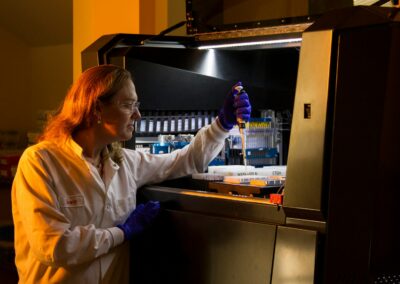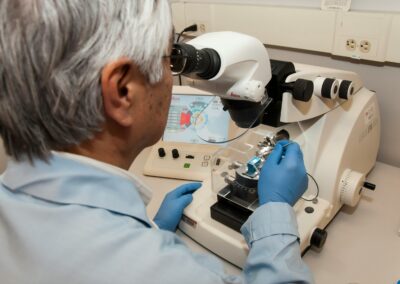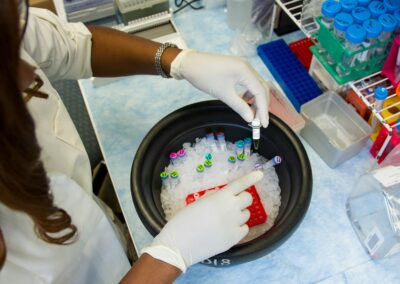Mitigating Risks and Ensuring Safety in Genetic Engineering
Identifying Potential Risks in Genetic Engineering
Risks and challenges in genetic engineering are paramount concerns for both researchers and the public as biotechnological advancements continue to accelerate. Genetic engineering, while offering transformative benefits in fields like medicine, agriculture, and environmental management, poses several risks that must be carefully managed. One of the primary risks involves unintended consequences, such as the creation of off-target genetic modifications that could lead to unforeseen health or environmental issues. Additionally, there is the risk of ecological disruption if genetically modified organisms are released into the environment without thorough testing. Ensuring the safety of these technologies requires rigorous risk assessment and management strategies to anticipate and mitigate potential adverse effects. These strategies must include comprehensive testing and validation processes to identify and address any potential risks before they manifest in real-world applications.
Addressing Ethical and Safety Concerns in Synthetic Biology
Risks and challenges in genetic engineering also encompass ethical and safety concerns related to synthetic biology. As synthetic biology allows for the creation of novel organisms and biological systems, it raises significant ethical questions about the boundaries of scientific intervention and the long-term impact on biodiversity. The ability to design and construct organisms with specific functions or traits necessitates a robust ethical framework to guide research and applications. Safety protocols must be established to ensure that synthetic organisms do not pose risks to human health or the environment. This includes implementing containment measures, monitoring systems, and transparency in research practices to maintain public trust and safety. Collaborative efforts among researchers, regulatory bodies, and stakeholders are essential to address these concerns and develop guidelines that balance innovation with ethical responsibility.
Implementing Risk Mitigation Strategies in Biotechnology
To effectively manage risks and challenges in genetic engineering, organizations must adopt comprehensive risk mitigation strategies. This involves developing and adhering to stringent safety standards and protocols throughout the research and development process. Risk assessment tools, such as hazard analysis and impact assessments, should be employed to evaluate potential risks and implement appropriate control measures. Additionally, ongoing monitoring and evaluation are crucial to identify and address emerging risks as technologies evolve. Collaboration with regulatory agencies and industry experts can provide valuable insights and support in developing effective risk management strategies. By fostering a proactive approach to risk mitigation, organizations can ensure the safety and efficacy of genetic engineering and synthetic biology innovations.
Leadership and Change Management in Biotechnology
Effective leadership and change management are critical in navigating the risks and challenges in genetic engineering. Leaders in biotechnology must be equipped to address the complexities of managing cutting-edge technologies while ensuring adherence to safety and ethical standards. Executive coaching services can enhance leadership skills, enabling executives to guide teams through the challenges of implementing new technologies and managing associated risks. Change management practices are essential to adapt to evolving regulations, emerging risks, and advancements in genetic engineering. By fostering a culture of innovation and responsibility, leaders can drive progress while maintaining a focus on safety and ethical considerations.
Strategic Planning and Risk Management in Biotech Projects
Strategic planning and risk management are essential for successfully navigating the risks and challenges in genetic engineering within biotech projects. Projects involving genetic engineering and synthetic biology require detailed planning to address potential risks and ensure compliance with regulatory requirements. Project managers must develop and implement risk management plans that outline procedures for identifying, assessing, and mitigating risks. This includes establishing contingency plans and response protocols for potential issues. By integrating risk management strategies into project planning and execution, organizations can minimize disruptions and achieve successful outcomes in biotechnology innovations.
Future Outlook and Risk Management in Genetic Engineering
The future of genetic engineering holds immense potential for advancing science and technology, but it also presents ongoing challenges that require effective risk management. As genetic engineering technologies continue to evolve, new risks and ethical considerations will emerge. Staying informed about the latest developments and incorporating adaptive risk management practices will be crucial for addressing these challenges. Investing in research, stakeholder engagement, and regulatory compliance will help ensure that genetic engineering innovations are developed and applied responsibly. By prioritizing safety and ethical considerations, organizations can contribute to the advancement of biotechnology while safeguarding public health and the environment.
#GeneticEngineering #SyntheticBiology #Biotechnology #RiskManagement #SafetyProtocols #EthicalBiotech #Innovation #ChangeManagement #Leadership #AdvancedBiotech































